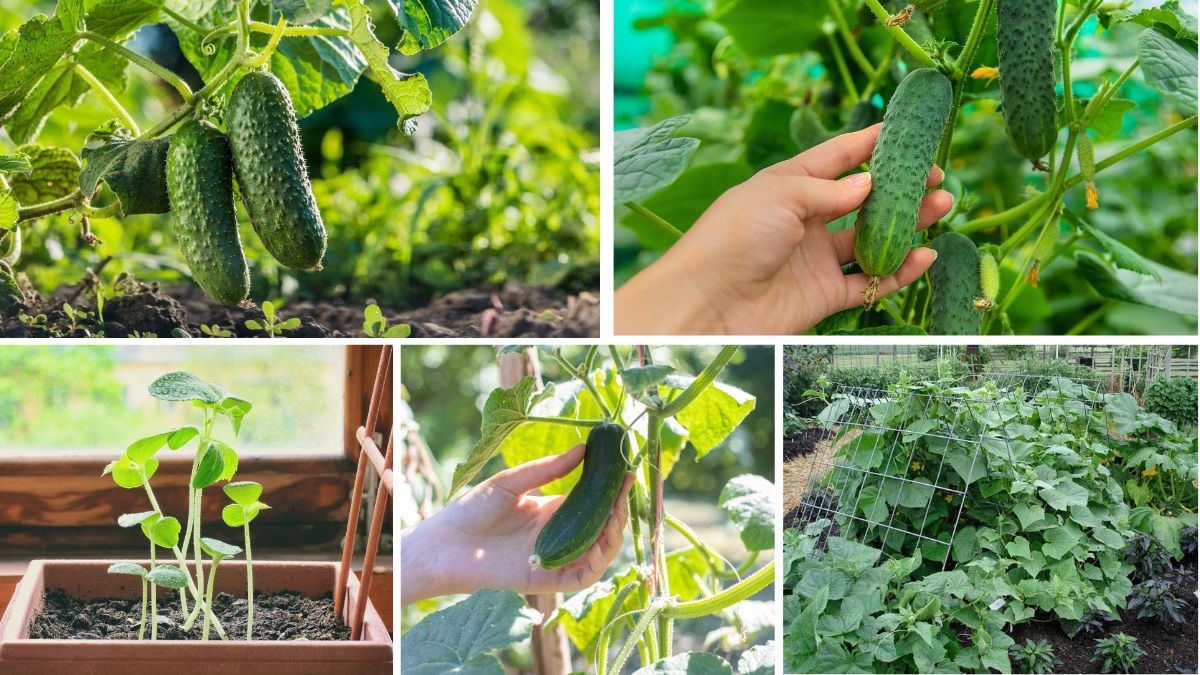Fresh, crunchy cucumbers are a garden favorite, perfect for salads, pickles, or snacking straight off the vine. While many people associate cucumbers with outdoor gardens, you can successfully grow them indoors year-round, even in small spaces. Indoor cucumber gardening offers control over growing conditions, protection from pests, and the joy of harvesting homegrown produce regardless of the weather outside. This complete guide will walk you through everything you need to know about growing cucumbers indoors — from selecting varieties to caring for your plants until harvest.
Why Grow Cucumbers Indoors?
Growing cucumbers indoors comes with several unique benefits:
- Year-round harvests – No need to wait for summer; enjoy fresh cucumbers in winter.
- Pest control – Avoid common outdoor pests like cucumber beetles and aphids.
- Space efficiency – Perfect for small apartments, balconies, or urban homes.
- Better quality control – Manage water, light, and nutrients for optimal growth.
- Fun & rewarding – Watching vines grow and picking your own cucumbers is satisfying.
1. Choosing the Right Indoor Cucumber Variety
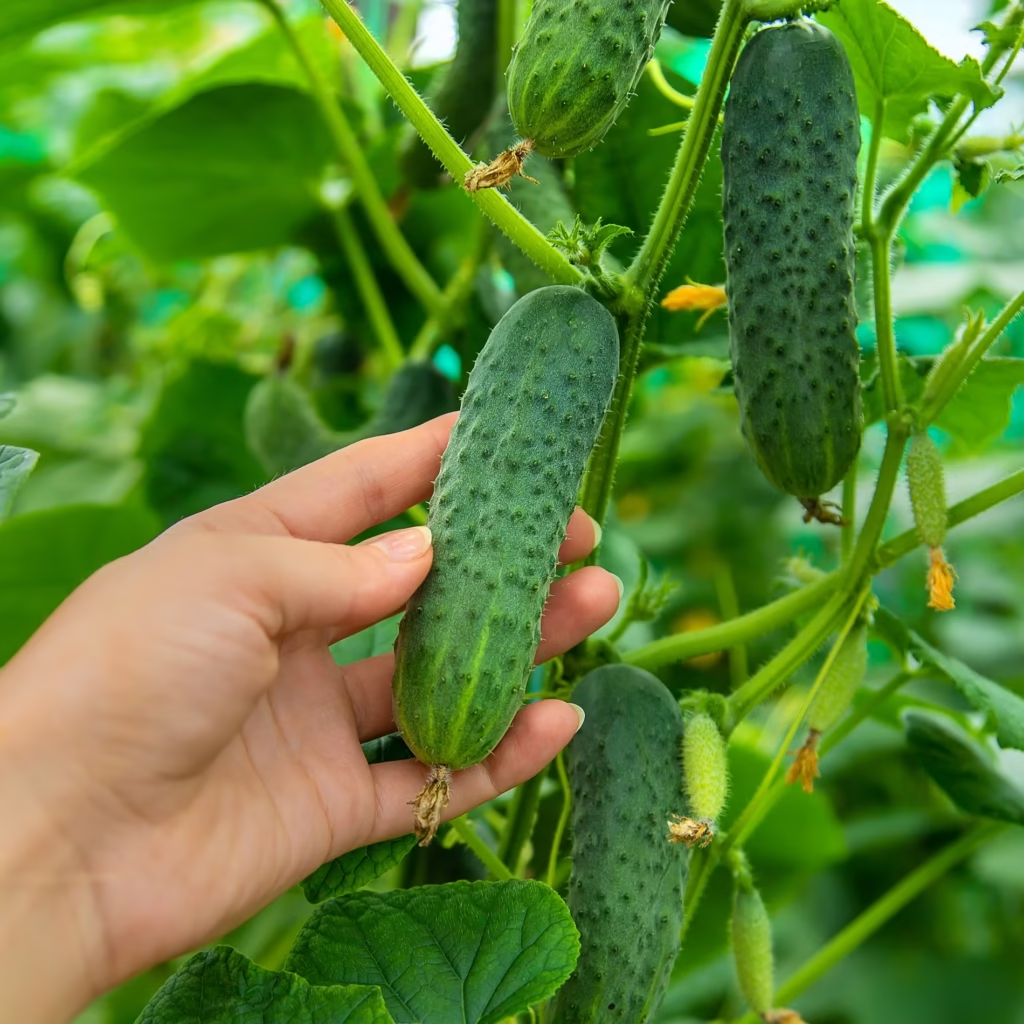
Not all cucumber types are ideal for indoor growing. The best choices are compact, bush, or dwarf varieties that don’t need excessive space. Popular options include:
- Bush Champion – Compact growth and quick maturity.
- Spacemaster – Grows well in containers and produces crisp fruits.
- Patio Snacker – Specifically bred for small spaces and container growing.
- Miniature or Gherkin Cucumbers – Perfect for pickling or snacking.
- Telegraph Improved – Produces smooth, seedless cucumbers indoors.
Tip: Look for “parthenocarpic” varieties that don’t require pollination to set fruit, which is useful indoors.
2. Preparing the Perfect Growing Space
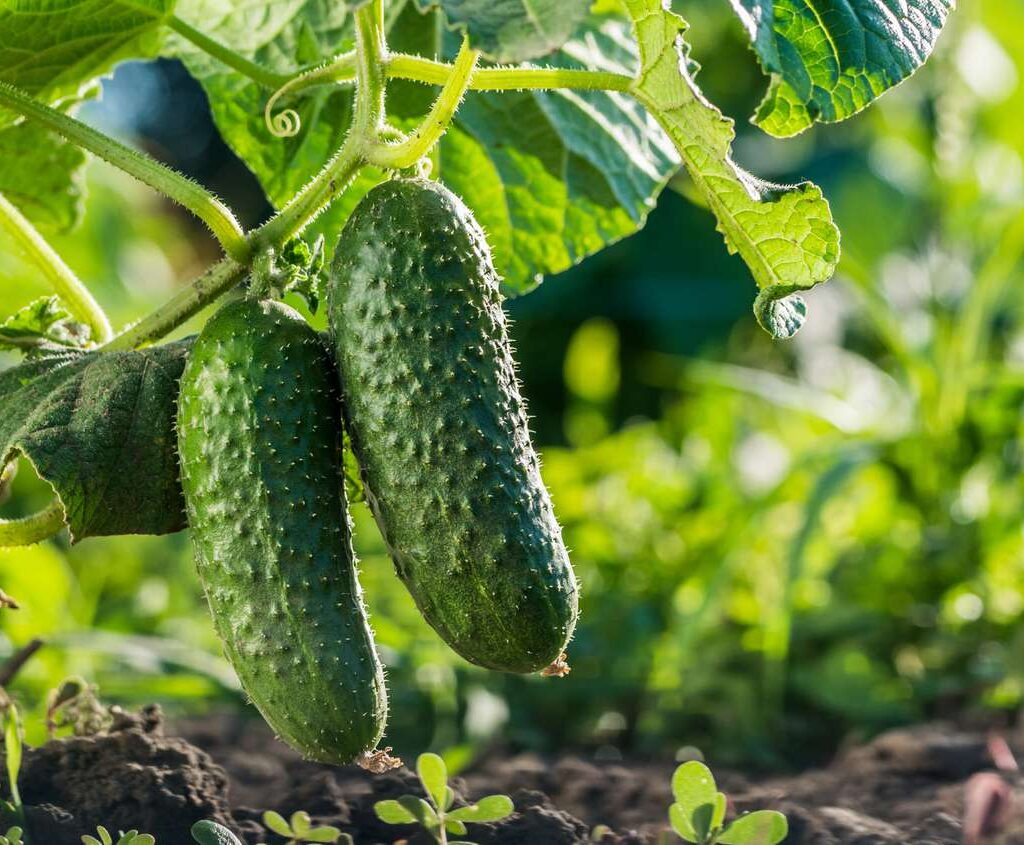
Cucumbers thrive in warm, sunny conditions, so you’ll need to recreate that environment indoors.
- Temperature: Maintain 70–85°F (21–29°C) during the day and 65–70°F (18–21°C) at night.
- Light: Cucumbers need 12–14 hours of bright light daily. Use LED grow lights if natural sunlight is insufficient.
- Humidity: Keep humidity around 60–70% to prevent leaf drying.
- Air circulation: Use a small fan to prevent fungal diseases and strengthen stems.
Tip: A south-facing window is ideal, but supplement with grow lights in winter or cloudy regions.
3. Selecting Containers and Soil
Cucumbers are fast-growing plants with deep root systems, so the right container and soil make a huge difference.
- Container size: Use a pot at least 12–14 inches deep and wide. Larger containers allow healthier root growth.
- Drainage: Ensure the container has several holes at the bottom to avoid waterlogging.
- Soil mix: Use a loose, nutrient-rich potting mix with good drainage. A mix of peat moss, compost, and perlite works well.
- Fertilizer: Mix in a slow-release organic fertilizer before planting to provide initial nutrients.
4. Planting Cucumbers Indoors
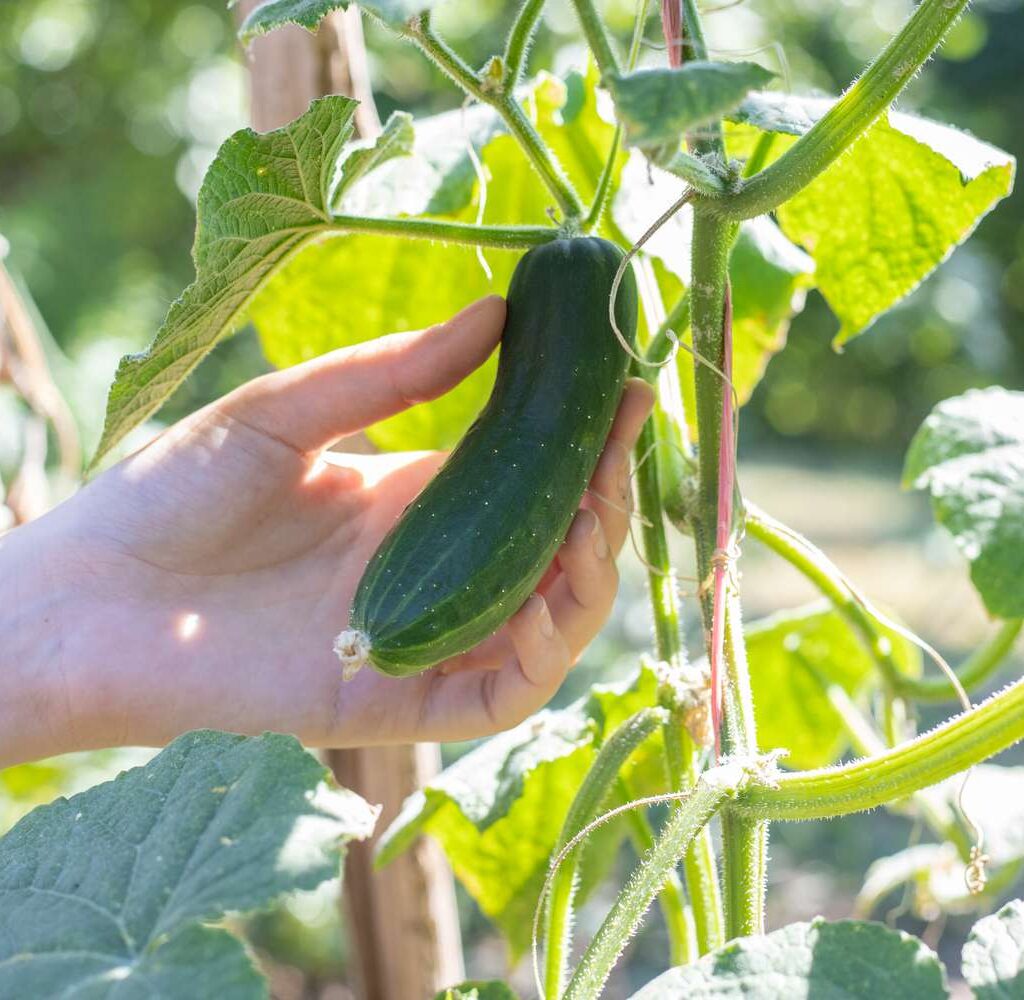
You can start cucumbers from seeds or seedlings:
- From seeds:
- Fill pots with your prepared potting mix.
- Plant seeds ½ inch deep.
- Water lightly to moisten the soil.
- Cover with plastic wrap until germination.
- From seedlings:
- Gently transplant into prepared pots.
- Avoid disturbing the roots too much.
Tip: Cucumbers germinate quickly — usually in 5–10 days under warm conditions.
5. Providing Light and Heat
Indoor cucumbers need consistent warmth and brightness:
- Use full-spectrum grow lights positioned 6–12 inches above plants.
- Set timers to give 12–14 hours of light daily.
- Keep plants away from cold drafts and heating vents.
Extra tip: If you’re using grow lights, adjust them as the plant grows to prevent leaf scorching.
6. Watering and Feeding
Cucumbers are water-loving plants, but overwatering can cause root rot.
- Watering schedule: Water deeply when the top inch of soil feels dry. Avoid wetting leaves excessively to prevent disease.
- Feeding schedule: Once plants start vining, feed every 2–3 weeks with a balanced liquid fertilizer (e.g., 10-10-10).
- Mulching: Add a thin layer of organic mulch on top of the soil to retain moisture.
7. Training and Support for Vines
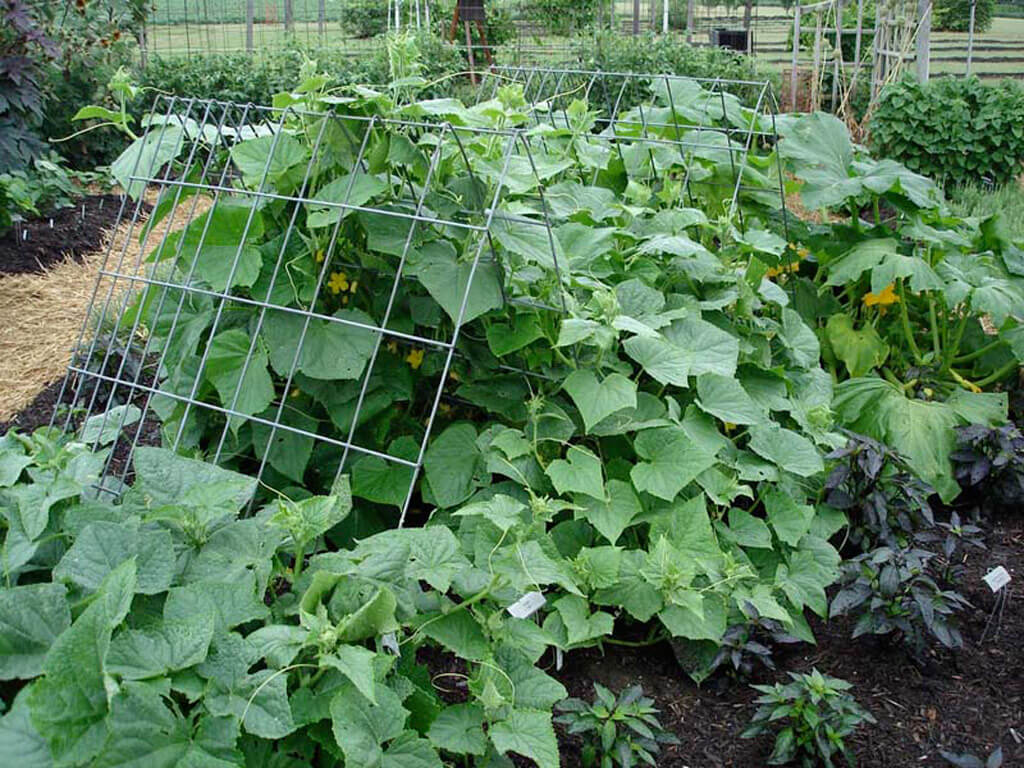
Even bush cucumbers benefit from vertical support to save space and improve air circulation.
- Trellis or stakes: Use a small trellis, bamboo stakes, or vertical netting inside the pot.
- Tying vines: Use soft ties or garden clips to secure vines as they grow.
- Pruning: Pinch off excess side shoots to encourage larger fruit production.
8. Pollination Indoors
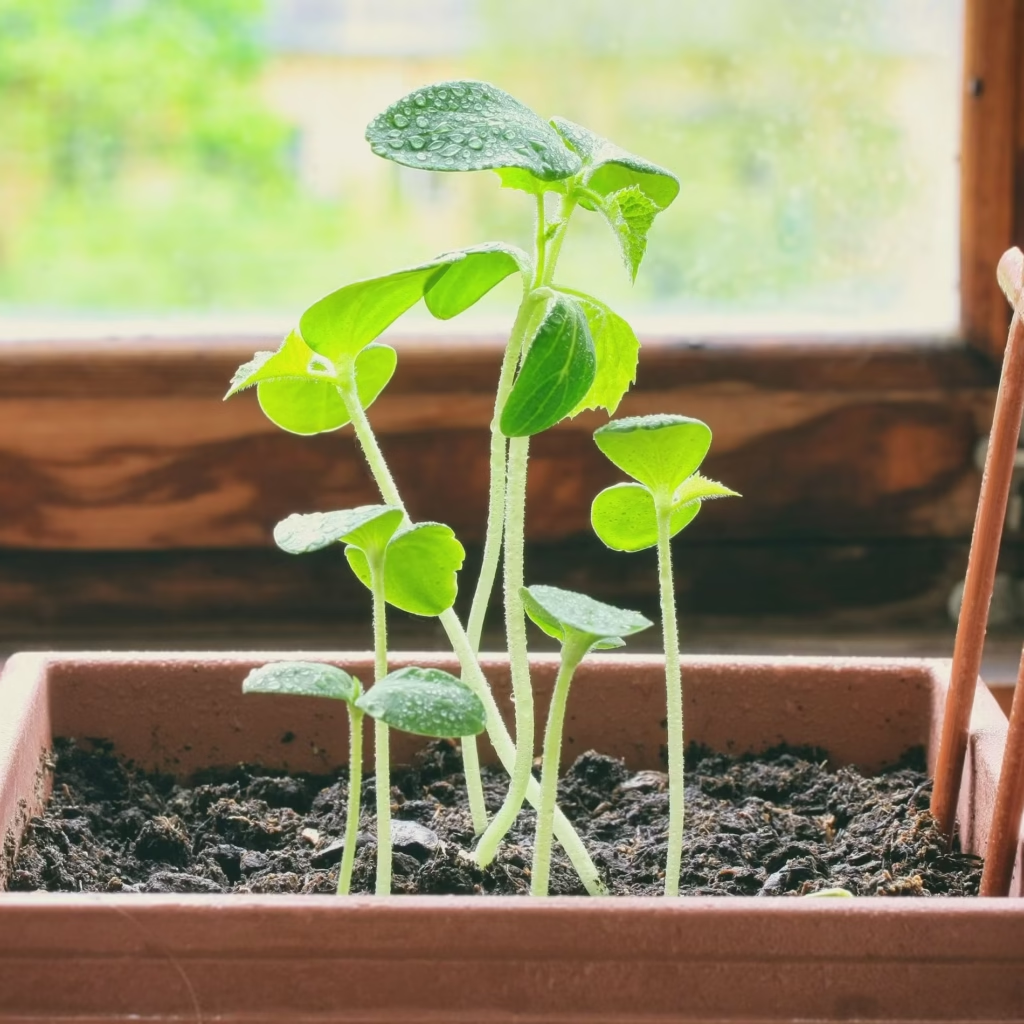
If you choose a non-parthenocarpic variety, you’ll need to hand-pollinate:
- Identify male flowers (thin stems) and female flowers (small cucumber behind petals).
- Use a small paintbrush or cotton swab to transfer pollen from male to female flowers.
- Repeat in the morning when flowers are open.
9. Pest and Disease Prevention
While indoor cucumbers face fewer pests, you should still watch for:
- Aphids – Remove with insecticidal soap or neem oil.
- Spider mites – Mist plants regularly and keep humidity high.
- Powdery mildew – Improve air circulation and avoid overhead watering.
Tip: Inspect plants weekly to catch problems early.
10. Harvesting Your Indoor Cucumbers
Cucumbers are best harvested young and tender for the sweetest taste.
- Timing: Most varieties are ready 50–70 days after planting.
- Signs of readiness: Firm, bright-colored skin with no yellowing.
- Harvesting method: Use scissors or a knife to cut cucumbers from the vine — don’t twist, as it can damage the plant.
11. Extending Production
To keep a steady supply:
- Stagger plantings every 3–4 weeks.
- Replace older plants when production slows down.
Final Thoughts
Growing cucumbers indoors is an incredibly rewarding experience that gives you fresh, chemical-free veggies all year round. By choosing compact varieties, providing plenty of light, maintaining proper watering, and training the vines, you can turn your kitchen corner or balcony into a mini cucumber farm. With a little patience and care, your indoor cucumber plants will reward you with crunchy, delicious harvests that taste far better than store-bought ones.
